Tarumanegara Kingdom: History, Heritage, Location, King
The work of Tarumanegara or also commonly referred to as the Tarum Kingdom is second oldest Hindu kingdom in Indonesia after the Kutai Kingdom.
The Tarum Kingdom ruled in the western area of the island of Java in the 4th century to the 7th century AD. This is evidenced by the existence of various historical relics that still exist today.
These relics include: temples, inscriptions and others.
The name of Tarumanegara comes from the words Tarum and Nagara. Tarum has the meaning of the river that divides West Java, namely the Citarum river.
But there are also those who argue that the term from the word Tarum comes from the name of a color plant located on the Citarum river.
And the word Nagara which means state or kingdom.
The Tarumanegara Kingdom is a kingdom that has Vishnu sect. This kingdom was founded by King Jayasingawarman in 358 AD.
Concrete evidence for this work lies in the contents of the Wangsakerta text. At that time, King Jayasingawarman obtained the title Rajadiraja. For more information about the Tarumanegara Kingdom, see the review below.
Table of contents
History of the Founding of the Tarum Kingdom
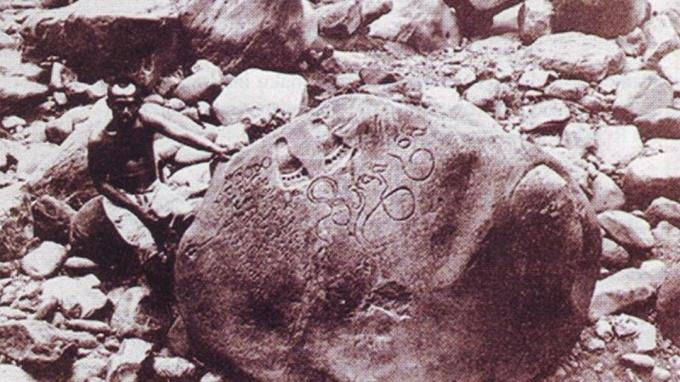
- The Kingdom of Tarumanegara or Taruma is a kingdom that once ruled in the area of the island of Java, especially in the west in the 4th century to the 7th century AD.
Where this kingdom is one of the oldest Hindu kingdoms in the archipelago. In historical records, the Tarumanegara kingdom is a Hindu kingdom that has a Vishnu sect.
The Tarumanegara Kingdom was originally founded by Rajadirajaguru Jayasingawarman in 358. And then the throne was succeeded by his son named Dharmayawarman (382-395). King Jayasinghawarman ruled from 358 to 382 AD.
- After the king was in old age, then the king resigned to live a priestly life. As a hermit, Jayasinghawarman has the title Rajaresi. The name and title of the king became Maharesi Rajadiraja Guru Jayasinghawarman.
Jayasingawarman is buried on the edge of the Gomati River, while his son is on the bank of the Candrabaga River.
Maharaja Purnawarman was the third king of the Tarumanegara Kingdom who reigned from 395 to 434 AD.
He built a new royal capital in 397 which was closer to the coast.
- The city was later named as Sundapura and for the first time the name Sunda was used. In 417, he ordered the excavation of the Gomati and Candrabaga rivers for 6112 spears (about 11 km).
After digging, the king then held salvation by donating 1,000 cows to the Brahmins. The Tarumanegara Kingdom left many inscriptions that we can find up to now, but unfortunately none of these inscriptions uses the number of years.
- To determine when Tarumanegara had been established, the experts were forced to try to find other sources.
And the various efforts made were not in vain. After that, they went to China to study the relationship between China and Indonesia in their past found manuscripts relating to the Indonesian kingdom with the Chinese kingdom which called it Tolomo.
According to the note, the Tolomo kingdom sent envoys to China in 528 AD, 538 AD, 665 AD, 666 AD.
Thus, with these findings it can be concluded that Tarumanegara has been established since around the V and VI centuries.
- The Pasir Muara inscription which states an event of returning the government to the Sunda king was made in 536 AD.
In that year who was reigning in the Tarumanegara Kingdom was Suryavarman (535 - 561 AD) the 7th king of the Tarumanegara Kingdom.
During the reign of Candrawarman in 515-535 AD, Suryawarman's father, many regional rulers re-accepting governmental power over his territory as a reward for his loyalty to the Kingdom Tarumanegara.
Based on this, Suryawarman then did the same thing as a continuation of his father's politics.
- The presence of the Purnawarman inscription in the estuary sands tells of the king of Sunda in 536 AD.
Where is one that shows if the capital of Sundapura has changed its status to a regional kingdom.
This means that the center of the government of the Tarumanegara Kingdom has shifted to another place.
Similar examples can also be found from the position of rajatapura or salakanagara (silver city), which was called argyre by Ptolemy in 150 AD.
- This city until the year 362 had become the center of government of the kings of Dewawarman (from Dewawarman I – VIII).
When the center of government shifted from Rajatapura to Tarumanegara, Salakanagara then changed its status to a regional kingdom.
Jayasingawarman as the founder of the Tarumanegara Kingdom was the son-in-law of King Dewawarman VIII. He himself is a maharesi from isalankayana in India who fled to the archipelago because of the area his power had been invaded and conquered by the ocean lord named Gupta of the Kingdom Magada.
- Suryawarman also not only continued his father's political policies which had given more confidence to regional kings to take care of their own government.
But he also turned his attention to the eastern eliayah.
Then in 526 AD Manikmaya who was a son-in-law of Suryawarman, founded a new kingdom in the Kendan area, Nagreg area between Bandung and also Limbangan, Garut.
The son of this Manikmaya figure then lived with his grandfather in the capital of Tarumangara and later became commander of the army of the Tarumanegara Kingdom.
The development of the eastern region then became more developed when Great-grandson Manikmaya founded the Galuh Kingdom in 612 AD.
Location of the Kingdom of Tarumanagara
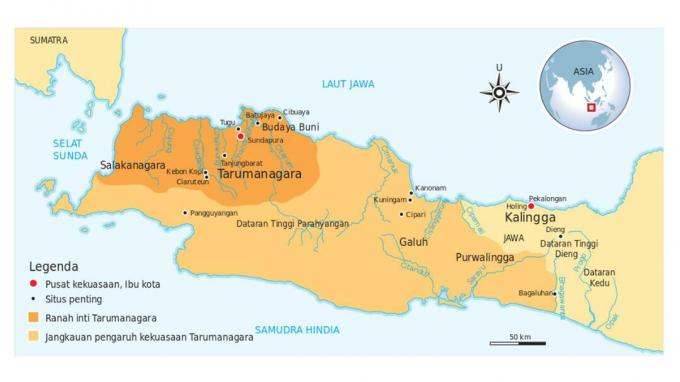
The location or position of the Tarumanegara kingdom's power is in the area around West Java.
The area expanded along with the development of this kingdom after being led by a king named King Purnawarman.
King Purnawarman, as mentioned in the Ciaruteun Inscription, Kebon Kopi Inscription, and various other inscriptions is the figure of a king who is very good at war.
King Purnawarman was also successful in expanding or expanding from various regions.
Then fought and conquered the Salakanagara Kingdom which previously also came to power in the land of Sunda.
Through this expansion, the territory and location of the Tarumanegara Kingdom also expanded to the Jakarta area (Tanjung Priok) and also Banten.
Judging from some historical evidence that has been found, experts agree that the Tarumanegara Kingdom which is where the first Hindu kingdom on the island of Java is located in the area around West Java (now).
Tarumanegara has a government center in the Sundapura area or what we now know as the Bekasi koa.
So that we can conclude, if we look at the contents of the Muara Cianteun inscription, the center of the The kingdom has moved during the reign of King Suryavarman and is the 7th King of the kingdom Tarumanegara.
The territory of the Tarumanegara Kingdom almost covered all of West Java and Banten.
In fact, the Tarumanegara Kingdom also had a great influence in the kingdoms in Central Java and East Java.
The Life of the Tarumanagara Kingdom
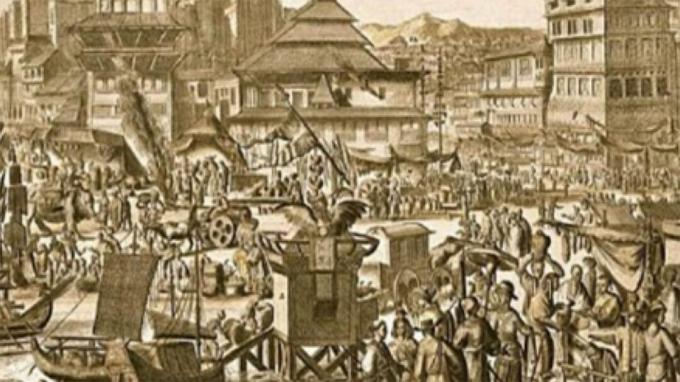
Here is the life that exists in the Tarum Kingdom, including:
1. Political Life
King Purnawarman is a great king who has succeeded in improving the lives of his people.
This is proven by the discovery of the Tugu inscription which states that King Purnawarman has ordered to dig a river.
The excavation of this river is very large, because it is from the construction of this river that the construction of irrigation canals that function to facilitate irrigation of people's agricultural fields
2. Social life
Social life in the Tarumanegara Kingdom has been neatly arranged, this can be seen from the king Purnawarman who continues to strive to improve the welfare of the lives of his people.
King Purnawarman is also very concerned about the position or position of the Brahmins who are considered important in perform duties in every sacrificial ceremony carried out in the territory of the kingdom as a sign of respect for the god.
3. Economic life
The monument inscription also states that King Purnawarman ordered his people to make a canal with a length of 6122 spears.
The construction of this canal has economic and great significance for the royal community.
This is because it can be used as a medium or means to prevent flooding and also as a means of preventing flooding means of inter-regional trade shipping traffic in the Tarumanegara Kingdom with world connections outside.
As well as for trade bridges with the surrounding areas. This certainly affects the economic life of the people of the Tarumanegara Kingdom to run regularly.
4. Cultural Life
Based on the technique and way of writing the letters in the inscriptions that were found as evidence of the greatness of the Tarumanegara Kingdom.
So we can know if the cultural level of society at that time was already high. Apart from being a cultural relic, the existence of these various inscriptions also shows the development of writing culture in the territory of the Tarumanegara kingdom.
King of the Kingdom of Tarumanagara
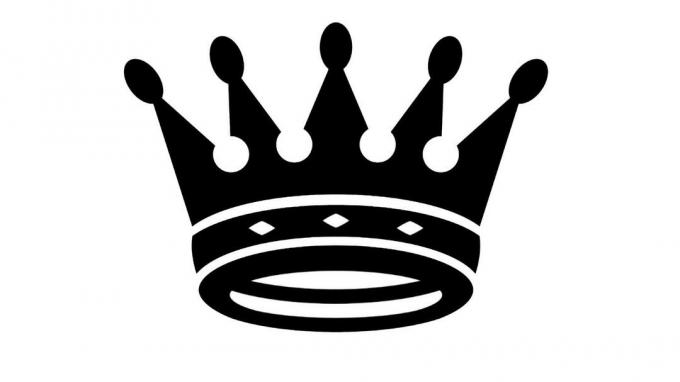
The Tarum Kingdom itself only experienced the reign of 12 kings. Then in 669 AD, Linggawarman who was the last king of Tarumanagara, was replaced by his son-in-law named Tarusbawa.
Linggawarman himself has two daughters. The eldest was named Manasih and became the wife of Tarusbawa from Sunda and the second was named Sobakancana and became the wife of Dapuntahyang Sri Jayanasa, the founder of the Srivijaya Kingdom.
So automatically, the throne of Tarumanagara's power fell on the son-in-law of his eldest daughter, namely Tarusbawa.
Then, the power of Tarumanagara ended with the transfer of the throne to Tarusbawa, because Tarusbawa was personally more wants to return to his own kingdom, namely in the Sunda kingdom which was previously under his control Tarumanagara.
On this transfer of power to Sunda, only Galuh disagreed and then decided to separate from Sunda and inherit the Tarumanagara area.
The kings who once ruled in the Kingdom of Tarumanegara:
- Jayasingawarman 358-382 AD
- Dharmayawarman 382-395 AD
- Purnawarman 395-434 AD
- Wisnuwarman 434-455 AD
- Indrawarman 455-515 AD
- Candrawarman 515-535 M
- Suryawarman 535-561 AD
- Kertawarman 561-628 AD
- Sudhawarman 628-639 AD
- Hariwangsawarman 639-640 AD
- Nagajayawarman 640-666 AD
- Linggawarman 666-669 AD
1. Tarumanegara Kingdom Lineage
Here are some lists of the famous kings of the Tarumanegara Kingdom, including the following:
1. Jayasinghawarman
The first king of the Tarumanegara Kingdom was King Jayasinghawarman who ruled the kingdom from 358 to 382 AD.
He is also the founder of the Tarumanegara Kingdom. Jayasinghawarman is a great sage from India, to be precise from the Salankayana area.
Salakayana fled to the archipelago because her kingdom had been attacked by the Magada Kingdom led by King Samudragupta.
When he died, he was buried on the banks of the Gomati river in Bekasi.
During Jayasinghawarma's reign, the center of the Tarumanegara Kingdom was then moved from Rajapura to Tarumanegera. Rajapura means Salankayana or City of Silver.
2. Dharmayawarma
The next king was Dharmayawarma who was the son of Jayasinghawarman. He ascended the throne to replace his father in 382 AD - 395 AD. Not much history is recorded from the second king of the Tarumanegara Kingdom. However, his name is included in the Wangsakerta Manuscript, which is a text that contains the kings of the Tarumanegara Kingdom.
3. Purnawarman
Purnawarma became one of the famous kings who ruled in the Tarumanegara Kingdom.
His name is listed in an inscription in the fifth century. Not only that, his name is also seen in the Wangsakerta Manuscript.
He ruled the kingdom from 395 AD to 434 AD. During his reign, the capital of the Kingdom of Tarumanegara moved to Sundapura. This is what later became the origin of the name Sunda.
At the time of Purnawarman's reign, the Tarumanegara Kingdom also experienced rapid progress. In fact, the Tarumanegara Kingdom was also successful in controlling at least 48 small kingdoms under it.
The power of the Tarumanegara Kingdom then stretched from Salakanegara or Rajapura, which at this time was estimated to be the area of Telu Lada, Pandeglang to Purbalingga, Central Java.
In ancient times, the state boundary of the Tarumanegara Kingdom was Kali Brebes.
After the reign of King Purnawarna, Tarumanegara Kingdom was then continued by his son named Vishnuwarma.
Then the throne was replaced by Indrawarman. And then replaced by Maharaja Candrawarman.
4. Suryawarman
King Suryawarman is the seventh king of the Tarumanegara Kingdom. Suryawarman ruled the kingdom for a period of 26 years.
Compared to his father the Maharaja Candrawarman, Suryawarman's policies are indeed different.
If Maharaja Candrawarman has full power that lies in the king. On the other hand, Suryawarman focused more on the government in the eastern part of the kingdom.
This is the origin of the establishment of the kingdom in Kendan, the area around Bandung and Limbangan Garut by his son-in-law named Manikmaya.
In fact, the area is also experiencing rapid development because of the Galuh Kingdom which was founded by Manikmaya's great-grandson in 612 AD.
5. Linggawarman
Linggawarman was the last king to rule the Tarumanegara Kingdom. Linggawarman ruled from 666 AD to 669 AD.
At that time, King Linggawarman did not have a son as the successor to the throne of the Tarumanegara Kingdom. And he only had two daughters, named Minarsih as his eldest daughter and Sobakancana.
Princess Minarsih then married Tarusbawa who became the successor king of Linggawarman. Meanwhile, Socakancana later married Daputa Hyang Sri who became the founder of the Srivijaya kingdom.
Relics of the Tarumanagara Kingdom
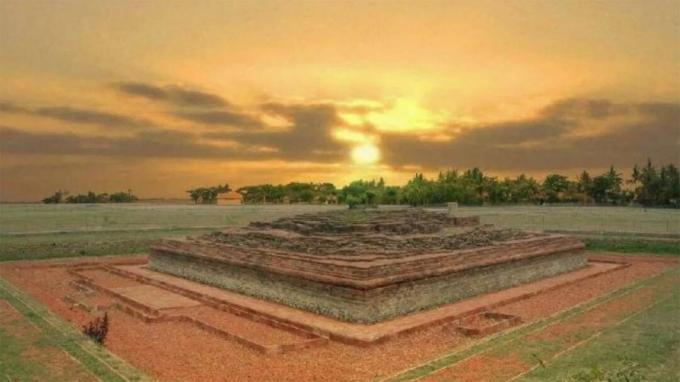
Here are some inscriptions or relics from the Tarumanga Kingdom, including the following:
1. Ciaruteun Inscription
The Ciaruteun inscription or also known as the Ciampea inscription was found on the banks of the Ciarunteun river, to be precise near the mouth of the Cisadane river, Bogor.
The inscription uses Pallawa letters and has Sanskrit which consists of 4 lines arranged into Sloka form with the Anustubh meter.
In addition, there is also a painting of a kind of spider and also a pair of feet from King Purnawarman. The image of the soles of the feet in the Ciarunteun inscription has 2 meanings, namely:
- Footprint symbolizing the king's power over the area (where this inscription was found).
- Footprints that symbolize the power and existence of a person (who is usually the ruler) as well as respect as a god.
This also means to emphasize the position of Purnawarman who is likened to the god Vishnu, so that he is considered as the ruler as well as the protector of the people.
2. Guava Inscription
The Jambu Inscription or also known as the Pasir Koleangkak inscription, was found on the Koleangkak hill, precisely in the guava plantation, about 30 km west of the city of Bogor.
This inscription also uses Sanskrit and Pallawa letters and in it there is also a picture of the soles of the feet praising the government system of King Mulawarman.
3. Coffee Garden Inscription
The Kebon Kopi inscription was found in the Muara Hilir village area, Cibungbulang district, Bogor.
What is unique about this inscription is that there are paintings of elephant footprints, which are likened to the footprints of the elephant Airawata, the elephant which is the mount of the god Vishnu.
4. Estuary Cianten Inscription
The Muara Cianten inscription was found in the city of Bogor. This inscription is written in unreadable curly script.
In addition to writing, this inscription also found paintings of the soles of the feet.
5. Pasir Awi Inscription
The Pasir Awi inscription was found in the Leuwiliang area which is also written in unreadable curl script.
6. Cidanghiyang Inscription
The Cidanghiyang inscription or also known as the Lebak inscription has been found in the village of Lebak, precisely on the banks of the Cidanghiang river, Munjul sub-district, Pandeglang district, Banten.
This inscription was only discovered in 1947 and in it contains 2 lines of poetry in the form of poetry with Pallawa letters and Sanskrit.
The content of the inscription is to glorify the courage of the king Purnawarman.
7. Monument inscription
The Tugu inscription was found in the Tugu area, Cilincing sub-district, North Jakarta. This inscription is carved in a circular stone and its contents are the longest than the other Tarumanegara inscriptions.
So, there are several things that we can know from the inscription that we do not find in other inscriptions.
Things that we can know from the Tugu inscription include:
- The Tugu inscription mentions the names of two famous rivers in Punjab. Namely the Chandrabaga and Gomati rivers.
With the information from the two rivers, it will lead to interpretations from scholars, one of which is according to Poerbatjaraka.
So that etymologically (the study of terms) the Chandrabaga river is defined as Bekasi river. - The Tugu inscription also explains the elements of the calendar, although it is not complete with the year numbers.
What is mentioned in it are the months of phalguna and caitra which are thought to be the same as the months of February and April. - The Tugu inscription mentions that the Brahmin's salvation ceremony was also followed by a thousand cows which were presented by the king.
Tarum Kingdom History Source
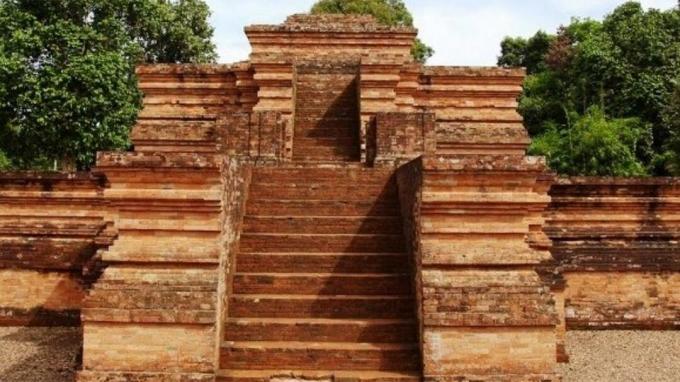
Evidence of the existence of the Tarum Kingdom is known through various sources that come from within or outside the country.
Sources originating from within the country are seven stone inscriptions found in Bogor as many as four inscriptions, one in Jakarta and the rest were found in Lebak Banten.
From these inscriptions it is known that the kingdom was led by Rajadirajaguru Jayasingawarman in 358 AD and he ruled until 382 AD.
The tomb of Rajadirajaguru Jayasingawarman is located around the Gomati river (in the Bekasi area).
The Tarumanegara Kingdom is a continuation of the Salakanagara Kingdom. Meanwhile, sources from abroad are included in the Chinese news, including:
- Fa-Hsien News, in the year 414 AD in his book entitled Fa-Kao-Chi which tells that in Ye-po-ti there are only a few people who are Buddhists.
Where most are Hindus and some are still animists. - News of the Sui Dynasty, tells that in 528 and 535 envoys had arrived from Tolo-mo which was in the south.
- News of the Tang Dynasty, also tells that in 666 and 669 envoys had arrived from To-lo-mo.
Based on the three stories above, the experts conclude that the term To-lo-mo is phonetically the same as the word Tarumanegara.
So, based on various sources that have been described previously, we can know some aspects of life about the Tarumanegara kingdom.
The Tarumanegara Kingdom is estimated to have developed between 400 and 600 AD.
Judging from the various inscriptions, we also know that the king who ruled at that time was Purnawarman.
Purnawarman's territory, according to what is stated in the Tugu inscription, covers almost the whole of West Java, which stretches from Banten, Jakarta, Bogor and Cirebon.
The collapse of the Tarumanegara Kingdom
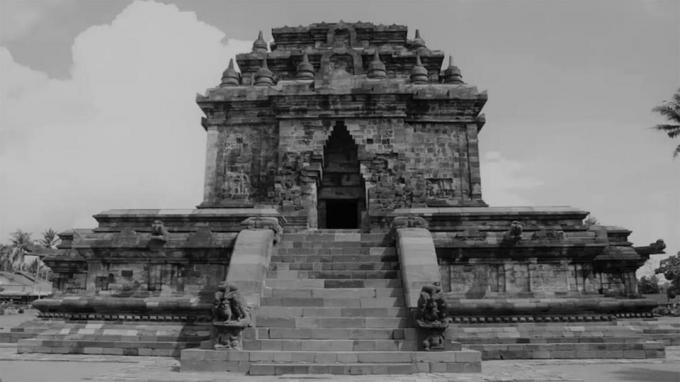
The collapse of the Tarumanegara Kingdom when the kingdom was led by the 13th king, namely King Tarusbawa.
The cause of the collapse of the kingdom was due to the absence of continued leadership in the kingdom.
Because, King Tarusbawa prefers to lead his small kingdom which is located downstream of the Gomati river.
Not only that, another reason for the collapse of the Tarumanegara kingdom was because of attacks from several kingdoms that existed at that time.
Moreover, the Majapahit kingdom was a kingdom that had an important role in the collapse of the Tarumanegara Kingdom.
And then the leadership was continued by Sudawarman. When led by Sudawarman, the Tarum Kingdom had experienced a drastic decline.
The decline was due to several things, including the following:
- Sudawarman did not care about the problems or problems that occurred in the kingdom, because from childhood he lived in the kanci.
- Sudawarman did not master the issue of Tarumanegara.
- Giving economy to the kings who are under him.
1. Conclusion
From what we have said above, we can conclude that the influence of Indian culture in Indonesia does not only refer to the development of Hindu-Buddhist teachings.
But also on other aspects. Such as: political, economic, socio-cultural aspects and so on
In the process of acculturation, Indonesia also plays an active role. This can be seen from the various relics that are not entirely the result of plagiarism from Indian culture.
Although the style and nature of culture is influenced by India. However, in its development, the Indonesian state is able to produce its own personality culture.
2. Suggestion
From the existence of the Tarumanegara kingdom which was located in our territory in the past. Therefore we must be grateful for it.
Why is that?
Because, that gratitude can be manifested in attitudes and behavior with a sincere and sincere heart driven by a high sense of responsibility in preserving and preserving ancestral culture we.
If we have participated in ensuring its sustainability, it means that we have taken part in elevating the degree and identity of the nation.
Therefore, let us together preserve and protect the cultural heritage of the nation that is the pride of all of us.
Thus a brief review this time that we can convey. Hopefully the above review can be used as your study material.
